If you’ve thought about creating digital products to diversify your revenue streams, you’re going to love this week’s episode. I’m chatting with Emily Baksa, a food copywriter and content strategist, about creating digital products that diversify your revenue and reconnect you with the creative joy of food blogging.
She unpacks a three-part framework that can transform your digital product launches — from creating offers your audience actually wants and building engaged email audiences to implementing marketing that connects rather than sells.
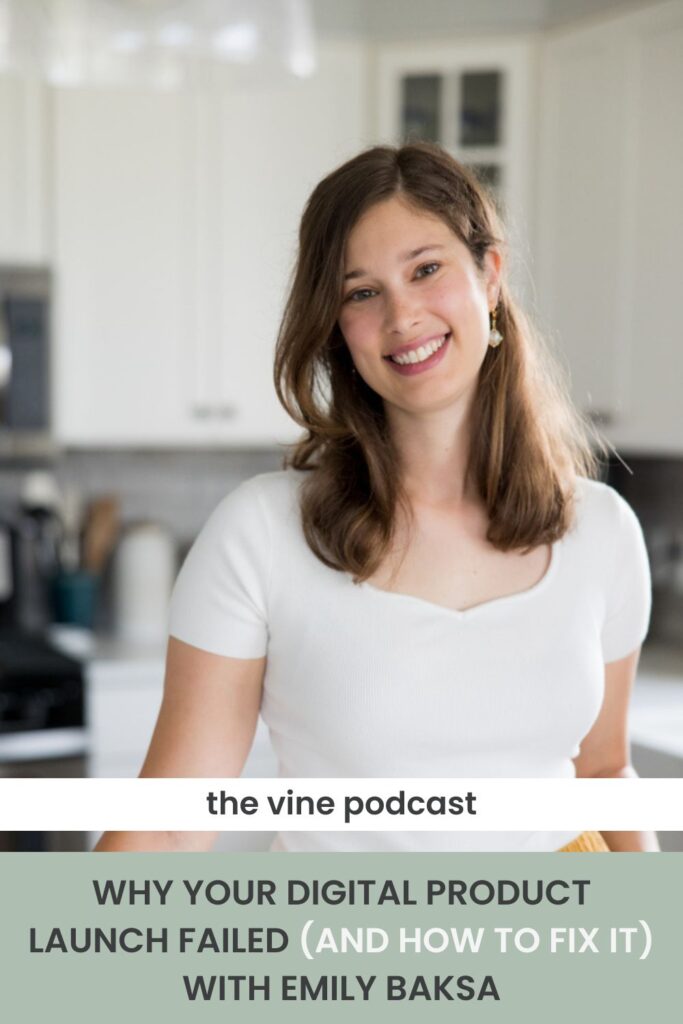
Why Digital Products Matter for Food Bloggers Now
The food blogging landscape has changed dramatically over the past year. Google’s helpful content updates have forced many creators to reconsider their business strategies. As Emily explains:
“When the Google helpful content updates first took a hit, I rode that roller coaster right alongside with everyone else. It was kind of an aha moment of like, why are we doing it this way? From that moment on, I became really passionate about helping my clients diversify their business so they’re less reliant on algorithms.”
Digital products offer food bloggers a chance to:
- Build deeper relationships with your audience
- Create income streams you fully control
- Put money directly in your pocket (versus small percentages from brand partnerships)
- Reconnect with the creative joy that sparked your blog in the first place
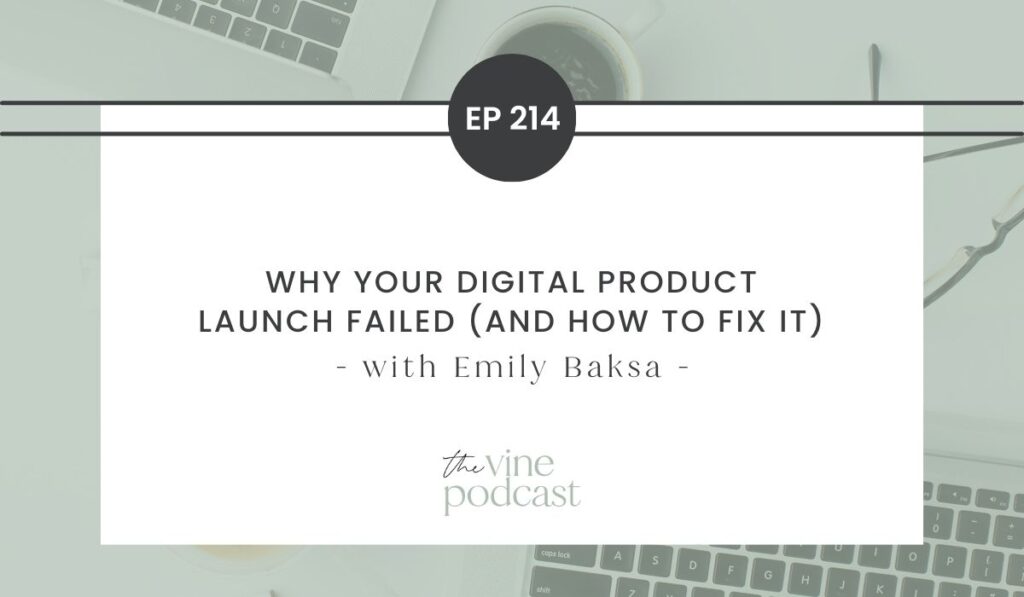
What Are We Talking About When We Say “Digital Products”?
Before diving into strategy, let’s clarify what we mean by digital products for food bloggers. While there are numerous options, we’re focusing primarily on smaller-ticket downloadable content that exists behind a checkout, typically priced between $5-20.
These might include:
- Recipe ebooks or collections
- Meal plans
- How-to guides
- Themed menus for occasions
- Shopping lists
- Prep lists
While you could eventually expand into larger offerings like courses or coaching, these simpler products are the perfect place to start. They’re easier to create, require less technical know-how, and serve as excellent testing grounds for bigger ideas.
The 3 Reasons Your Digital Product Launch Didn’t Succeed
According to Emily, there are three primary reasons why food bloggers’ digital products often underperform:
Reason #1: You Didn’t Create the Right Offer
Many food bloggers create products based on what they want to make rather than what their audience wants to buy. Emily points to “My Top 20 Recipes” ebooks as a prime example:
“If I had a dollar for every time I saw those… There’s nothing about that that draws me in. That type of product is really more about the individual than the audience.”
How to Create the Right Offer:
The foundation of a successful digital product is creating something your audience genuinely wants. Start by asking:
- What topics or recipe types do your followers consistently request more of?
- Which questions do you find yourself answering repeatedly?
- What content reliably performs well across your platforms?
“When you create something your audience wants, it makes selling really easy and feel super natural. It doesn’t feel ‘selly’ – it makes it feel like you’re giving them something that’s making their life better,” Emily explains.
Focus on the information you want to communicate first, then determine the format that best delivers that content – not the other way around.
How to Discover What Your Audience Wants:
Finding out what your audience truly wants might seem challenging, especially if they’re not actively engaging. Emily suggests:
- Collect insights from comments, DMs, and email replies
- Store these insights in a document for future inspiration
- Conduct simple surveys (with incentives for participation)
- Look at your highest-performing free content for clues
Emily shares a success story: “We ran a survey for a client and identified a clear theme – readers were really interested in family recipes from her culture. That became a big driver in creating a comprehensive recipe book with 30 recipes, some never seen before.”
Another untapped opportunity? Consider turning your most popular free content into paid products by enhancing them. As Emily notes, “There’s this culture of giving everything away for free that I’m constantly challenging.”
Reason #2: Lack of a Qualified Audience to Sell To
Even the perfect product will fail without the right audience to sell it to. This is where your email list becomes crucial.
“Your email list is the most valuable because it’s the most reliable,” Emily explains. “It’s the channel you have complete control over. You’re not at the mercy of an algorithm, and no update could tank your performance.”
The people on your email list have actively indicated their interest in you and your content, making them pre-qualified for your offers.
The Numbers Game: Do You Need a Huge List?
Many food bloggers assume they need massive email lists to succeed with digital products. Emily disagrees:
“It’s about engagement more than anything. A list of 1,000 people with a 50% open rate is more valuable than a list of 10,000 people with a 2% open rate. With a 5,000-person list and a 40% open rate, you’ll reach 2,000 people. If just half of those purchase a $7 product, that’s $7,000 from a single launch – not including ongoing sales. Most food content creators have a strong, loyal audience. You’re already many steps ahead of most people. It’s just putting them in a controlled channel like your email list that will help you see results.”
Building a Qualified Email List:
If your list needs work, focus on creating targeted, high-value opt-ins that qualify subscribers for specific topics:
- Offer themed educational content rather than generic “latest recipes” updates
- Create email sequences that deliver value over time
- Use opt-ins to identify subscriber interests for future product development

Reason #3: Not Having a Marketing Strategy
This is where most food bloggers drop the ball. Creating the product is just the beginning – you need a comprehensive plan to get it in front of potential buyers.
“A lot of people think the creating process is fun, but that’s not where it ends, it’s just where it begins,” Emily emphasizes.
Essential Components of a Successful Marketing Strategy:
1. A dedicated sales page: Even for small-ticket items, you need a landing page that clearly communicates what buyers will receive and addresses potential questions or objections.
2. A strategic email campaign: Plan a sequence of 5-7 emails sent over several weeks to nurture potential buyers through the decision-making process.
“One email won’t do it. Emails get missed, people’s lives are busy,” Emily notes. “You want to keep reminding people that this thing is available.”
3. Multi-platform promotion: While email is typically most effective, consider:
- Pre-launch “coming soon” messaging on social media
- Website pop-ups on related content
- Banners in your navigation
- Consistent mentions in your link in bio
4. Launch format considerations: Decide whether to use a limited-time “open/close” launch (creating urgency) or an “evergreen” always-available approach (allowing for consistent, long-term marketing).
Crafting Effective Sales Emails:
When writing sales emails, Emily recommends:
- Using storytelling to make your messaging feel natural and conversational
- Focusing less on features and more on how the product will make people feel
- Addressing potential objections and questions throughout the sequence
- Including testimonials to build trust (even if they’re from related content)
“People make decisions based on emotions, not rational things,” Emily explains. “When you tap into how they feel and how this will make their life better, that’s going to pique their interest more than a list of what they get.”
Digital Products as an Evolution, Not a One-Time Effort
One final mindset shift Emily encourages is seeing digital products as an evolving part of your business rather than a “set it and forget it” venture:
“Having the conception that you make a thing, share it, and then let it sit there for 10 years as ‘passive income’ – I think that’s very misleading. Yes, it’s less active than having your time directly associated with your revenue, but you do have to be willing to learn and evolve.”
Each product launch teaches you something about your audience and offerings. Use these insights to refine future products or enhance existing ones. A “failure” is simply a stepping stone to your next, more successful iteration.
“Whether or not it meets your sales targets on the first try, I think that’s not entirely a realistic expectation,” Emily notes. “The expectation should be to learn, grow, and evolve.”
Be Bold and Try Again
If your previous digital product launch didn’t perform as expected, now is the perfect time to try again with these new strategies in hand. The landscape has changed, and so have the tools available to help you succeed.
“Be bold, try again, and have fun with it,” Emily encourages. “If it didn’t work in the past, that’s cool. The landscape’s different now. This time might work better, it might have some bumps too, but then you’re going to try again. Each iteration you’re going to learn.”
Digital products offer food bloggers a chance to take control of their revenue streams while reconnecting with the creative passion that started their blogging journey. By creating the right offer, building a qualified audience, and implementing a thoughtful marketing strategy, you can transform this often-overlooked income stream into a thriving part of your business.
Related episode:
EP 175: Exact Steps to Create a Digital Product ASAP
EP 190: Monetizing Your Expertise Through Digital Products with Jillian Leslie
Exclusive Offer for Vine Listeners!
Get your FREE exclusive Digital Product Income Calculator from Emily here!
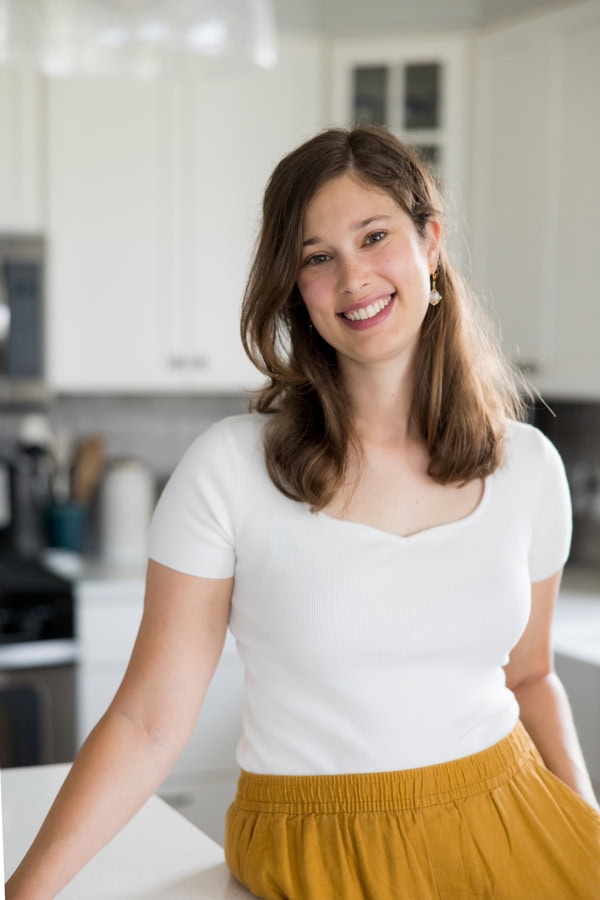
Emily Baksa is a copywriter and marketing strategist who helps food content creators gain creative and financial freedom so they keep loving what they do. She helps her clients create more time, money, and ease through a diversified content strategy that boosts traffic, builds community, and generates independent revenue streams. Inspired by the chefs she worked alongside during her six years in hospitality, she launched her business to help creatives like them thrive. She has since partnered with over 20 food content creators, establishing herself as an industry leader and featured speaker at events like the Tastemaker Conference.
Be sure to follow her on Instagram!

ready to take your food blog to the next level?
We work with food bloggers looking to stand out of the crowd through custom brand and website design.

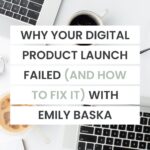
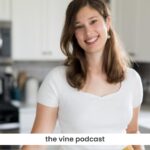

Leave a Comment